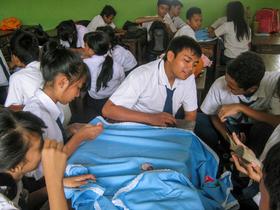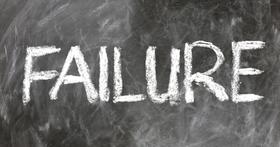Halliday High School serves 2 students in grades 9-12.
The percentage of students achieving proficiency in math was <50% (which was lower than the North Dakota state average of 77%). The percentage of students achieving proficiency in reading/language arts was ≥50% (which was lower than the North Dakota state average of 77%).
The student-teacher ratio of 1:1 was lower than the North Dakota state level of 11:1.
School Overview
Grades Offered
Grades 9-12
Total Students
2 students
Gender %
Total Classroom Teachers
2 teachers
School Rankings
Math Test Scores (% Proficient)
(09-10)<50%
77%
Reading/Language Arts Test Scores (% Proficient)
(09-10)≥50%
77%
Student-Teacher Ratio
1:1
11:1
American Indian
n/a
11%
Asian
n/a
1%
Hispanic
n/a
7%
Black
n/a
5%
White
100%
71%
Hawaiian
n/a
n/a
Two or more races
n/a
5%
All Ethnic Groups
Eligible for Free Lunch (14-15)
40%
24%
Eligible for Reduced Lunch (13-14)
14%
6%
School Statewide Testing
School District Name
Source: National Center for Education Statistics (NCES), ND Dept. of Education
Frequently Asked Questions
What percent of students have achieved state testing proficiency in math and reading?
<50% of students have achieved math proficiency (compared to the 77% ND state average), while ≥50% of students have achieved reading proficiency (compared to the 77% ND state average).
How many students attend Halliday High School?
2 students attend Halliday High School.
What is the racial composition of the student body?
100% of Halliday High School students are White.
What is the student-teacher ratio of Halliday High School?
Halliday High School has a student ration of 1:1, which is lower than the North Dakota state average of 11:1.
What grades does Halliday High School offer ?
Halliday High School offers enrollment in grades 9-12
What school district is Halliday High School part of?
Halliday High School is part of Halliday 19 School District.
Recent Articles

Charter Schools vs Public Schools 2025: Key Differences & Trends
Explore updated 2025 insights comparing charter schools vs public schools, enrollment, academic outcomes, funding, and real-world examples for families and educators.

Are Public Schools Ready for the 21st Century? 2025 Update
Explore 2025 insights on whether public schools are ready for the 21st century, covering performance, technology, equity, funding, and future-ready learning.

Public School Open House & Enrollment Season Guide
A parent-focused guide to the public school open house and enrollment season, with expert questions, timelines, and decision tips.





